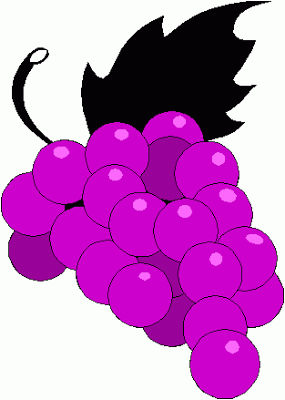 At the conclusion of the Divine Liturgy on the Great Feast of the Transfiguration of our Lord on Mount Tabor, the priest blesses grapes …
At the conclusion of the Divine Liturgy on the Great Feast of the Transfiguration of our Lord on Mount Tabor, the priest blesses grapes …
Why?
Here follows some answers …
The blessing of grapes, as well as other fruits and vegetables on this day is the most beautiful and adequate sign of the final transfiguration of all things in Christ. It signifies the ultimate flowering and fruitfulness of all creation in the paradise of God’s unending Kingdom of Life where all will he transformed by the glory of the Lord.
Source
This is an ancient Christian custom. The first week of August, on the sixth of August, the farmers use to gather the early fruits of their summer harvest (grapes, figs etc.) and to present them in the Church to be blessed and to give them for free to congregation. These fruits are called the “beginnings”.
In a text from the 7th century (“the laws of the kingdom” by emperor Constantine Porfirogenitos) this custom is described vividly: “The Emperor of Constantinople gathers the “beginnings” (“aparches”) in Chalcedone, where there are many vines, and then he waits for the Patriarch of Constantinople to come on the the Holiday of Transfiguration, to bless the fruits and to personally hand out the grapes to the laymen”.
This custom is honored in many places in Greece where there are plantation with vines.
We must not forget that the Church was presented once as a “vine”. So, [the] Church blesses the first fruits of vine giving a “theological” meaning to farmer’s work.
Source
In footnote 2 for Canon III of the Canons of the Apostles it says that, “during the festival of the Dormition…they used to offer bunches of grapes to the patriarch…at the end of the divine service. Today however [this is St Nikodemos Agiorite writing in the early 19th c] it is the prevailing custom in most regions for such grapes to be offered at the festival of the Transfiguration of the Saviour, and for them to be offered by the priest.”
Source
A nun, Mother Evfrosinia adds …
However, as grapes do not ripen at the same time everywhere, the Church adapted this tradition in various ways. In some places in the Holy Land, for instance, grapes are blessed on the feast of the prophet Elijah. In Russia, where grapes were not always readily available, apples were more commonly blessed, and Transfiguration is known as “Yablochny Spas”, “the Apple Feast of the Saviour”. In northern Russia, where even apples weren’t ripe by August 6/19, it was traditional to bless peas. Nowadays, when you can buy any sort of fruit or vegetable year round, we’ve lost the sense of getting a blessing to partake of the first fruits. But we can still try to keep to the spirit of this tradition. In our monastery we bless all sorts of fruit on Transfiguration, but we abstain only from grapes, taking care not to eat grapes of the new harvest until the feast, in keeping with the ancient monastic practise.
Source
In addition, the blessing of grapes, that is specifically mentioned liturgically, is an allusion to the Mystery of the Holy Eucharist, the New Wine that is Christ’s Blood that nourishes us spiritually. The liturgical prayers also refer to Christ Himself as the “Divine Cluster” attached to the Cross from which “Drips the Mystic Wine.”
Source
Some ancient Typicons prescribe the blessing of fruit of the vine (grapes), not on the feast of the Transfiguration, but on the feast of the Dormition. In the Greek Nicolo-Casulan Typicon of the twelfth-thirteenth century, we read: “Let it be known that, on the feast of the Dormition of the Most Holy Mother of God, the 15th of August, grapes are blessed and eaten in church after the Divine Liturgy according to an ancient tradition.” The Typicon of Sinai of the year 1214 contains the same prescription. Similarly, the Typicons of the Lavra of St. Athanasius on Athos prescribes the blessing of grapes on the 15th of August. We have the custom of blessing flowers on the feast of the Dormition.
Source
Finally, the late Bishop Alexander …
It is the tradition of the Day of Transfiguration to consecrate grapes, apples and other fruit after the Divine Liturgy. The custom of bringing fruit to the temple for consecration originates in the Old Testament time (Gen 4:2-4; Ex 13:12-13; Num 15:19-21; Deut 8:10-14). The Apostles brought this tradition to the Church of the New Testament (1 Cor 16:1-2). Instruction regarding bringing fruit to temple is found in the Third Rule of the Apostolic Canon, the earliest collection of ecclesiastic laws (canons), known since the second century. In Greece, August is the month of ripeness of fruit, mostly grapes and new ears of corn. Since old time, the faithful have been bringing them to temple for consecration and as Thanksgiving to God. St. John Chrysostom wrote, “Plowman receives fruit from the earth not so much for his labour and diligence, as out of goodness of God Who grows this fruit, because neither is he that planteth any thing, neither he that watereth; but God that giveth the increase.”
Grapes are brought to temple because they are directly related to the Eucharistic sacrament; that is why in the prayer for consecration of grapes the priest says, “Bless, Lord, this new fruit of vine which reached ripeness because Thou kindly provided good weather, drops of rain and stillness. Let eating this fruit of vine make us joyful. And give us the honor of offering this fruit to Thee, as the gift of purging of sins, altogether with the Holy Body of Thy Christ.”
In the first centuries of Christianity, the faithful brought forth to the temple the fruit and crops of the new harvest: bread, wine, oil, incense, wax, honey etc. Of all these offerings, only bread, wine, incense, oil and wax were taken to the altar, while the rest was used for the needs of the clergy and the poor whom the church was caring for. These offerings were to express gratitude to God for all goods, but at the same time help servants of God and people in need. Until today, consecration of bread and wine, eggs and milk and other food has been kept in consecration of artos in the church and meals at home on Easter. Consecration of flowers and tree branches is performed now on Palm Sunday, the days of the Holy Trinity and Exaltation of the Cross, and on Sunday of the week of the Veneration of the Cross. Rice with rasins and honey are used as offerings in services for the dead and remembrance repast. Prosphoros are brought forth for proskomide everywhere even today.
Source
Originally posted in 2006; some links may be broken.











